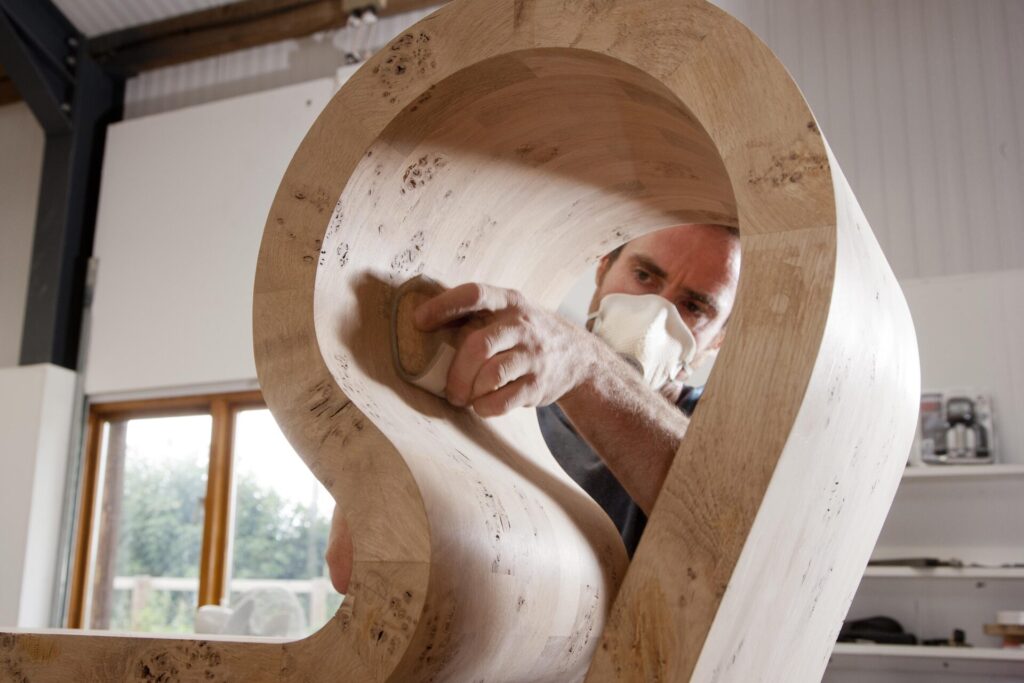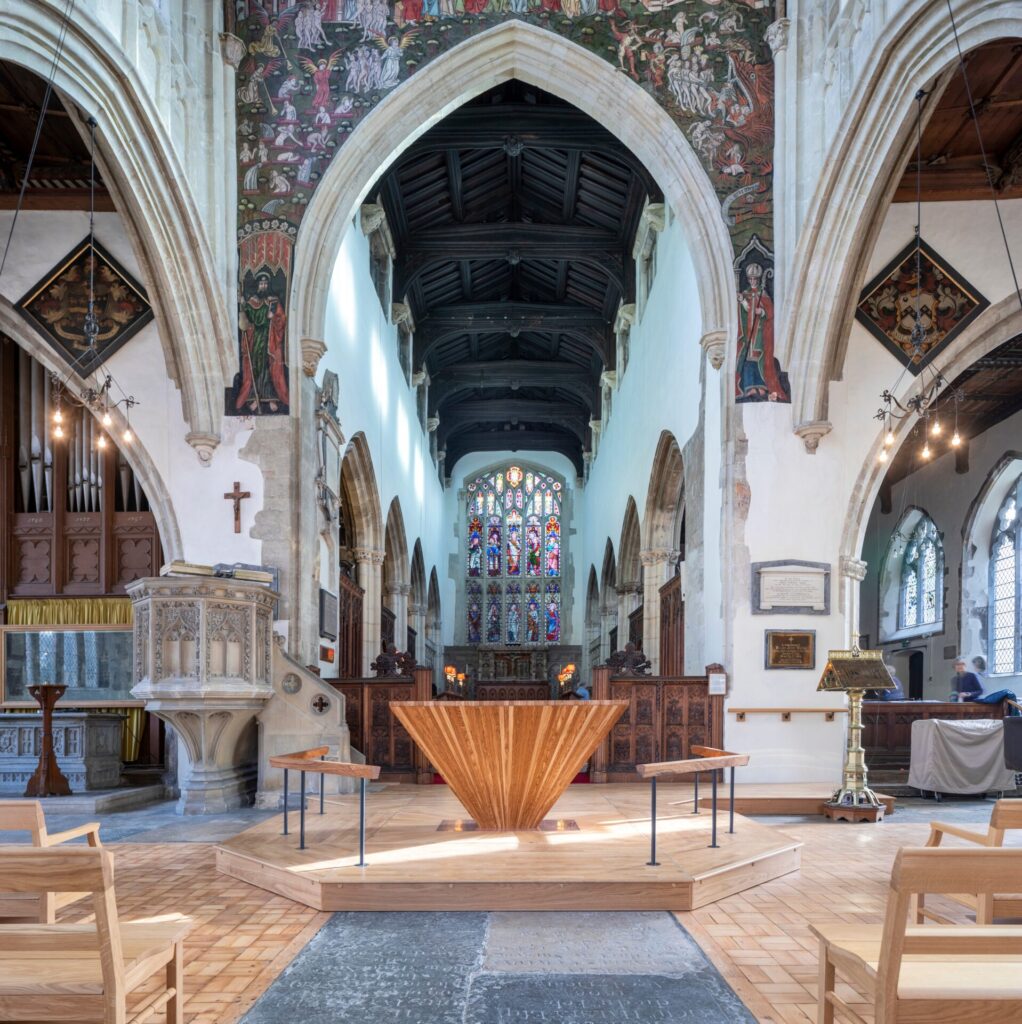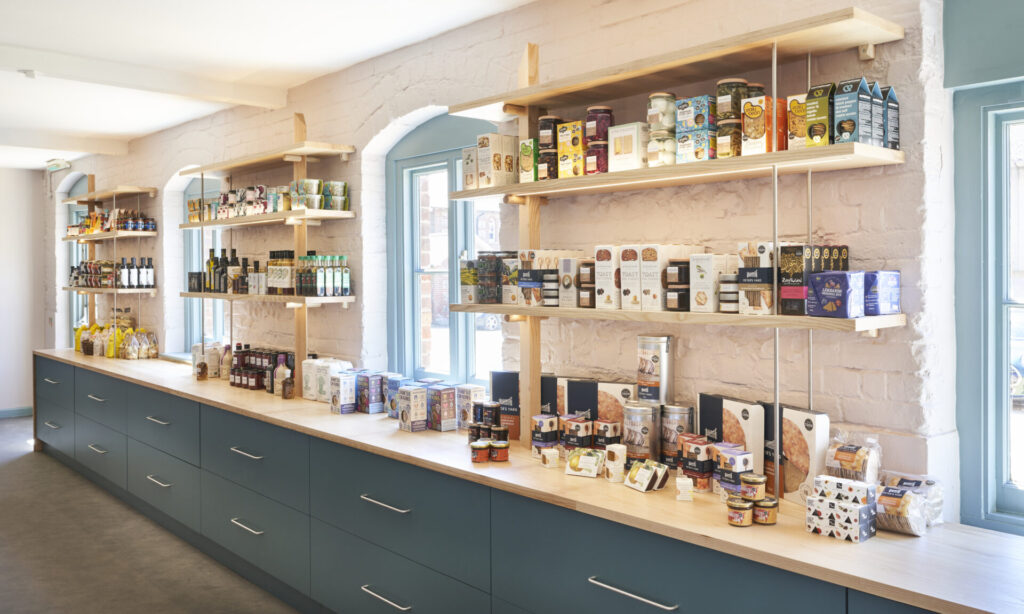Matthew Burt – ecologist, craftsman and renowned furniture maker – still lives a few miles from where he grew up in the Wylye valley
You know that little notice at the end of movie credits: ‘No animals were harmed in the making of this film’ – well, there should have been one at the end of Skyfall, just to reassure fans of Matthew Burt’s beautiful furniture designs that C’s office was not really destroyed when it was blown up in the film.
Matthew, whose studio-workshop is just outside Hindon, made the fittings for the office of the real C, in that iconic, ziggurat-style building on the south bank of the Thames.
He is no stranger to important projects – public commissions include benches for the Courtauld Gallery in London and the Ashmolean in Oxford, and locally, an oak stave altar for Salisbury’s St Thomas’s Church. A recent architectural project for a private client is a massive domed ceiling, made with 5,500 sculpted pebbles of Wiltshire ash, inspired by the kernel of a sunflower.
Matthew is a world-class craftsman with a commitment to constant learning and evolving. ‘I never stop wanting to improve,’ he says. ‘I am 74 and I have no plans to retire. Why would I forego the excitement of possibility that this job gives me?’
But the products of the workshop are not just big projects – they include small furnishing items such as key holders or hall-stands. A pre-Christmas piece by an apprentice a few years ago was a little, stylised pyramidal Christmas tree, made out of diminishing concentric wooden circles – the perfect thing on which to display prettily wrapped sweets or petits fours.

Radical roots
Matthew was born into a farming family in the Wylye valley and is absolutely wedded to the area. He is outspoken, powerfully committed to conserving and protecting the environment and passionate about the importance of preserving real and traditional craftsmanship. He says: ‘We live in Wiltshire, we make in Wiltshire and we get our wood as far as possible from Wiltshire. We make world-class furniture here – where we need support is in selling it to the world.’
His roots are deep – and radical. His great-great grandfather was one of the campaigners who started the Tisbury riots – part of the nationwide Swing Riots when poverty-stricken agricultural workers protested about the loss of work caused by the new threshing machines.


They called for ordinary people to get the vote, in the time of “rotten boroughs” when only (male) landowners could do so.
After taking a degree in botany and ecology, Matthew changed direction – influenced by the appeal of a wooden, barrel-topped chest made by a friend – and studied furniture design at Ryecotewood College, run in conjunction with the (long gone but still much-missed) Council for Small Industries in Rural Areas (CoSIRA).
He took the two year course in a year, and served his apprenticeship with master-craftsman Richard Fyson at Kencot, near William Morris’s Oxfordshire home and workshop at Kelmscott.
He and his new wife Celia, his life-long creative partner, bought a cottage in the Wylye valley, where they still live, and he gained his first commission – a new front door for a cousin. He has never been out of work since.


Keeping skills alive
Like many craftspeople and makers, Matthew and Celia have often faced financial problems – he says he has never paid himself more than a minimum wage – but their drive and complementary skills kept them afloat. The occasional unexpected wealthy client – a man in an expensive car who came to ask about garden furniture and ended up spending £10,000 – saw their Hindon workshop gradually expand, and by the end of the 1980s they were employing six people. Later they acquired premises in the village where they showcase the work of Matthew and his apprentices and makers, with occasional exhibitions featuring other local artisan makers.
Giving young people a chance to learn an important craft was the initial reason for taking on trainees. Some of the early apprentices, now long qualified, have been with him for nearly 30 years. At present Matthew has two apprentices, eight makers and six senior makers.
‘Keeping skills alive for future generations is my business,’ he says. ‘We are not in the business of education – we are in the business of training, creating skills. Keeping alive artisanal skills is a way of interpreting our times. We can better our lot through our own intelligence and application.’
Fairy anarchy
The business is free of vested interests, says Matthew, who ‘refuses to genuflect towards group thinking.’ He describes this fiercely independent artisan spirit as part of what he calls the ‘fairy anarchy of Britain.’
There you have it – when you look at the work that comes out of the Matthew Burt Ltd workshop, you see wizardry in wood, contemporary design combined with wood working skills that are as old as time. When you meet the man who inspires this creativity and craftsmanship, you might reflect that you are not only talking to an internationally acclaimed furniture designer-maker, but are in touch with an age-old spirit of the woods.





